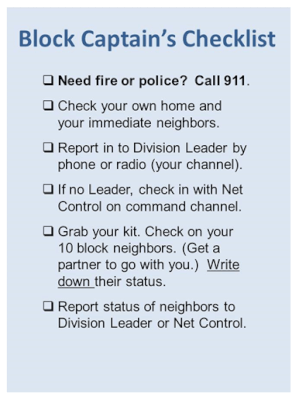Evacuate with your pet

Over the past several weeks my neighbors and I have been caught up in the aftermath of our “almost evacuation.” (The next zone to evacuate was across the street, and we were just waiting for the police call.)
While I was fighting gusty winds and dust to get my own stuff packed up, I was particularly conscious of all my neighbors who have pets. In our senior community, pets are small. But many dogs are astonishingly aggressive. Few dogs and certainly no cats have any obvious obedience training. Many don’t seem to like a leash.
How would these pets and their owners fare in an evacuation?
Well, the threat never materialized for us. We were lucky. But as our neighborhood emergency response group continues to examine what should have gone better, pets take their place among the concerns at the top of the list. So today, let’s take a closer look at how to evacuate with your pet!
As it turns out, over this very same period I was putting finishing touches on the last book in our Mini-Series – entitled Protect Your Pet. Our booklet goes through fully a dozen situations that help define what it takes to be a responsible and loving pet owner. Throughout, it focuses on what really happens to pets in emergencies.

If you aren’t confident you’ve thought it all through, grab a copy of the book! You’ll feel a whole lot better once you’ve answered the dozen or so questions that it contains! They cover how to evacuate with your pet, but also how to cope with everyday emergencies, pet first aid, lost pets, etc. Every pet owner needs this information.
As far as this Advisory goes, though, I’d like to focus on just two things.
1- Does your pet have what it needs to evacuate with you or with someone else’s help?
A pet go-bag.
Just as you need a custom go-bag for yourself, each of your pets needs one too. It contains basic food supplies, water, a dish, medicines and identification. Yes, the pet go-bag can contain a lot more, but these are the absolute essentials. (We have a whole chapter on pet survival kits in the Mini-book.) The go-bag accompanies your pet and . . .
Your pet’s travel carrier.
One of my neighbors contemplating being bussed to a shelter said, “Oh, I’ll just take my cat with me, on her leash.”
Here’s the problem with that. Vehicles sent to pick up senior evacuees can’t manage loose animals! Can you imagine being on a crowded bus with a dozen or so pets pulling, twisting, climbing, barking, etc.?
To be confident your pet will be allowed to accompany you, and to be sure it will be safe during the trip, it needs its own familiar and comfortable carrier. And you need to be able to manage that carrier yourself or have arranged with a partner to help.
There are hundreds of pet carriers on the market. If you don’t have a carrier for each of your pets, you really need to consider getting one. Here are some things to look for:
- Size. Is the carrier the right size for the pet? Some pets will feel comforted by a snug, closely fitting carrier, but most will want to be able to turn around and lie down. (Some carriers even have expandable sides to add extra room.) Before you start your search, measure your pet’s shoulder height and length in addition to knowing its weight. (Remember, only one pet to a carrier.)
- Weight. Some fabric carriers weigh less than 3 lbs; hard-sided plastic crates can easily weigh as much as 10 lbs. Add the weight of your pet. Remember, you will be carrying this! (You’ll see one option below that doesn’t require too much carrying!)
- Balance. A child strapped to your chest is easy to manage. So is a pet – and yes, there are chest pet carriers! But a small pet in a large backpack with a solid bottom may move around so much that you find it hard to walk safely. Moreover, while a pet may ride happily in a backpack, it can’t be left on the floor inside that soft-sided pack. Think about where you might be going and how you’ll carry your pet.
- Airline approved. If you think you might be flying with your pet, check now to find out the size and weight limitations placed on travelers by the airlines. In-cabin pet travelers must stay in their carrier the entire time, and that carrier must fit under the seat in front of you. Caution: Not all airlines have the same restrictions!
Below you’ll find some examples of carriers. But first,
2- Does your pet know HOW to evacuate?
Every dog we’ve had has loved “taking a ride.” From what I hear, though, other animals absolutely HATE it! Some like to be able to see out, some cower under a blanket. Some pets welcome being in a crowd of strangers, others get aggressive or frightened.
If you want your pet (and yourself) to make it through the stress of evacuation travel and perhaps prolonged confinement, you need to train your pet HOW to evacuate! This involves obedience training and crate training. We offer suggestions in the booklet. Suffice it to say for this Advisory that as a beloved member of your family, your pet deserves these trainings!
Now, some examples of carriers and crates to help you evacuate with your pet — safely and comfortably.
Click on the links beneath the images to get to Amazon where you can get full details and prices, and compare with other similar styles. As you know, we are Amazon Associates and may get a small commission if you buy through our links.
Rolling Pet Carrier. I would choose this carrier immediately for one reason – I wouldn’t have to carry it! The telescoping handle doesn’t take up much room but would make walking through airports or bus stations or a high school gym shelter a whole lot easier. This carrier also includes washable mattresses to keep it clean and comfy for your pet.
There are other rolling carriers, of course. It looks to me as though the simple ones with just two wheels won’t stand up by themselves if you need to have both hands free for a moment.

Something a bit more fashionable!
This classic bag from well-known manufacturer Sherpa looks very secure and comfortable, even stylish, with quilted sides and flexible leather handles (and additional carrying strap). It has side plus top entry – absolutely something I’d want. Flexible frame helps bag keep its shape, adjusts to fit under an airline seat.

Yes, a hands-free pet carrying sling!
I carried my baby boy with a sling – so convenient! This one for pets comes in a variety of colors, three sizes to fit pets up to 14 lbs. Obviously, your pet can’t stay in the sling in an emergency shelter, but this would be excellent for quickly getting out of an emergency situation.

Very basic folding crate.
Mesh all around for plenty of visibility – and so you can see instantly how your fur-baby is doing. Removable stiff floor; plush blanket included. This one comes from the Amazon Basics collection.

Portable dog house!
During the recent evacuation members of our family had to remove by car to a hotel with their LARGE dog. He traveled with his wire crate. Something like this soft-sided crate might have been far more convenient and comfortable. (And would look a lot nicer as a piece of furniture in the house while he’s getting crate trained.)

One last thought about evacuating with your pet.
In reviewing articles and comments about pet owners and their experiences with carriers, it seems that some pets are simply determined to escape. They claw, chew, scratch, pull and twist until they are FREE! So keep pet and carrier under close watch until you are sure everything is secure!
Do you have experience evacuating with a pet? Share your story below in the comments. Everyone will appreciate it!
Virginia
Your Emergency Plan Guide team


 Over the years Joe and I have been involved in both CERT and NERT training. CERT is Community Emergency Response Team training, a course and refreshers offered by our city. NERT is our informal Neighborhood Emergency Response Team, with its own unofficial and customized training.
Over the years Joe and I have been involved in both CERT and NERT training. CERT is Community Emergency Response Team training, a course and refreshers offered by our city. NERT is our informal Neighborhood Emergency Response Team, with its own unofficial and customized training. Our NERT volunteers carry a quick reminder checklist of their primary duty when the community is hit by an emergency. It’s a card similar to the one to the left.
Our NERT volunteers carry a quick reminder checklist of their primary duty when the community is hit by an emergency. It’s a card similar to the one to the left. And according to surveys, 90% of American pet owners consider their pet “a member of the family.”
And according to surveys, 90% of American pet owners consider their pet “a member of the family.”




 As a pet owner, are you offended at this question:
As a pet owner, are you offended at this question:

 If someone said to evacuate RIGHT NOW, would you be ready?
If someone said to evacuate RIGHT NOW, would you be ready?
